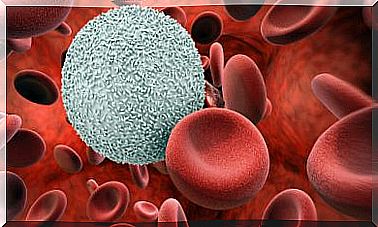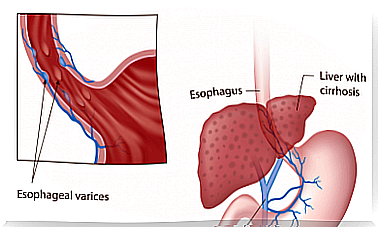What Is Uveitis And What Are Its Symptoms
Uveitis is a form of eye inflammation. It affects the middle layer of tissue in the eye wall called the uvea. This ocular pathology can occur in one eye or in both.
The warning signs of uveitis usually come on suddenly and get worse quickly. It usually occurs, especially in people between 20 and 50 years old, but it can also occur in children.
Uveitis can be serious and lead to permanent vision loss. Early diagnosis and treatment are important to prevent complications from uveitis.
On the other hand, people with changes in certain genes may be more likely to develop uveitis. Additionally, a recent study found a significant relationship between uveitis and smoking.
Types of uveitis

The uvea is the middle layer of tissue in the wall of the eye. It’s formed by:
- Iris.
- Ciliary body.
- Choroid: it is located between the retina – located in the innermost layer of the wall of the eye – and the sclera – the outermost white part of the wall of the eye.
The uvea provides blood flow to the deep layers of the retina. The type of uveitis you have will depend on the parts of the eye that are inflamed:
- Iritis : affects the front part of the eye and is the most common type.
- Cyclitis : affects the ciliary body.
- Choroiditis and retinitis : affect the back of the eye.
- Diffuse uveitis : occurs when all layers of the uvea are inflamed.
In any of these conditions, the jelly-like material in the center of the eye (vitreous humor) can become inflamed and invaded by inflammatory cells.
In addition, there is another classification of uveitis according to the area of the uvea that is affected. In severe cases, all layers are involved.
Previous
Inflammation of the uvea occurs near the front of the eye. It starts suddenly and symptoms can last up to 8 weeks. Some variants of anterior uveitis are constant, while others go away and come back.
Intermediate
The swelling of the uvea occurs near the central part of the eye. Therefore, symptoms can last from a few weeks to many years. This variant can be cyclical, sometimes improving and sometimes getting worse.
Later
The inflammation of the uvea is near the back of the eye. Symptoms can manifest gradually and can last for many years.
Symptoms and complications
The signs, symptoms and characteristics of uveitis include some such as:
- Redness of the eyes.
- Eye pain.
- Sensitivity to light.
- Blurry vision.
- Dark spots floating in the field of vision (floaters).
- Decreased vision.
Symptoms can come on suddenly or get worse quickly, but in some cases they come on gradually.
In addition to these symptoms, if left untreated, uveitis can cause certain complications, including:
- Glaucoma.
- Cataract injury.
- Injury to the optic nerve.
- Retinal detachment.
- Permanent loss of vision
Causes of uveitis

In about half of all cases, the specific cause of uveitis is unclear. In the case where a cause can be determined, it may be one of the following:
- Autoimmune disorder, such as sarcoidosis or ankylosing spondyloarthritis.
- Eye injury or surgery.
- Inflammatory disorder, such as Crohn’s disease or ulcerative colitis.
- An infection, such as cat scratch disease, shingles, syphilis, toxoplasmosis, tuberculosis, Lyme disease, or West Nile virus.
- Cancer that affects the eyes, such as lymphoma.
Diagnosis and treatment of uveitis
Since uveitis is often associated with other diseases or conditions, some diagnostic tests may be necessary. These may include a physical exam, blood or skin tests, eye fluid tests, and imaging tests.
Regarding treatment, it should be treated immediately to avoid long-lasting problems. Ophthalmologists often treat uveitis with eye drop medications that reduce inflammation.
They may also use eye drops that dilate the pupil to reduce pain and swelling.









